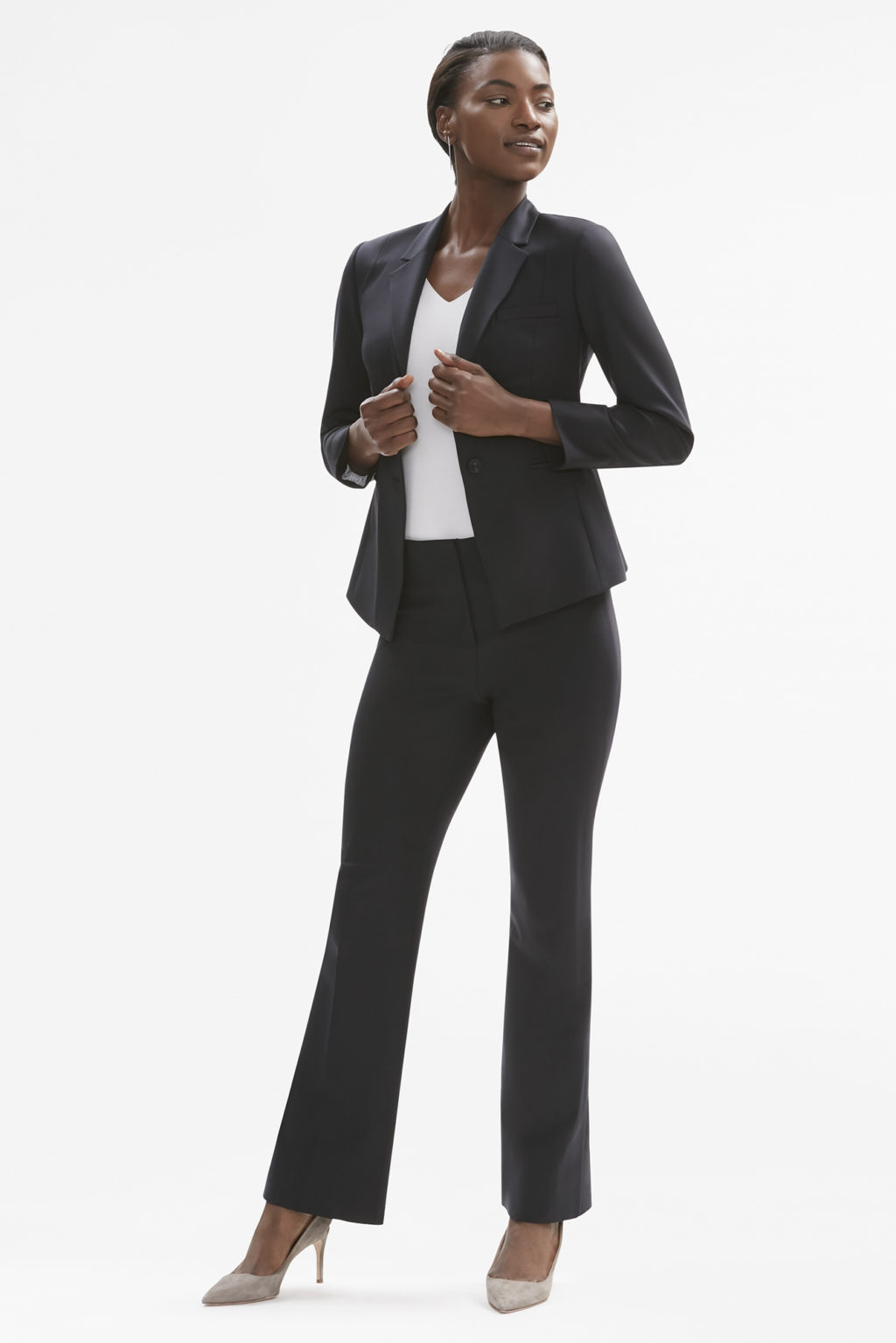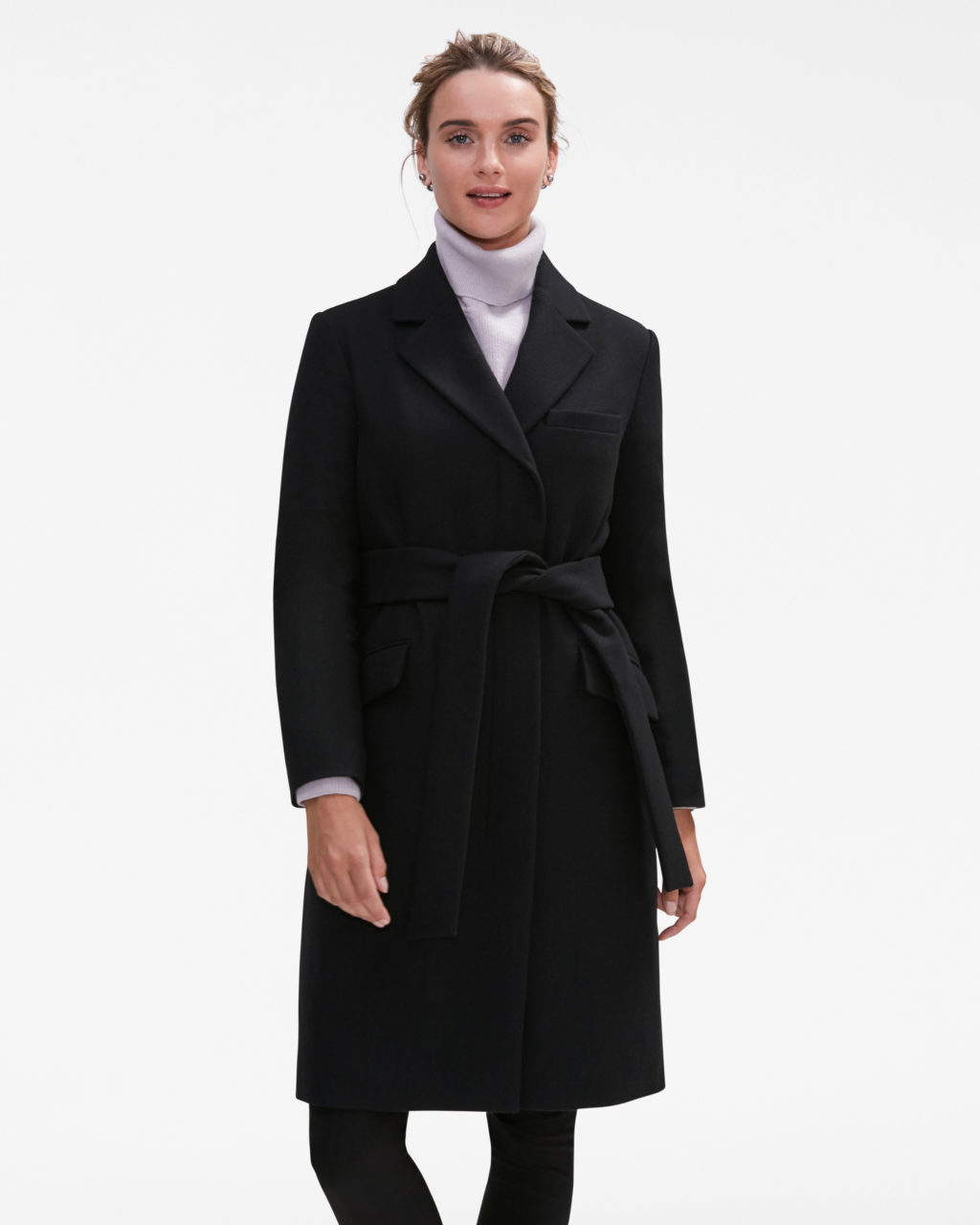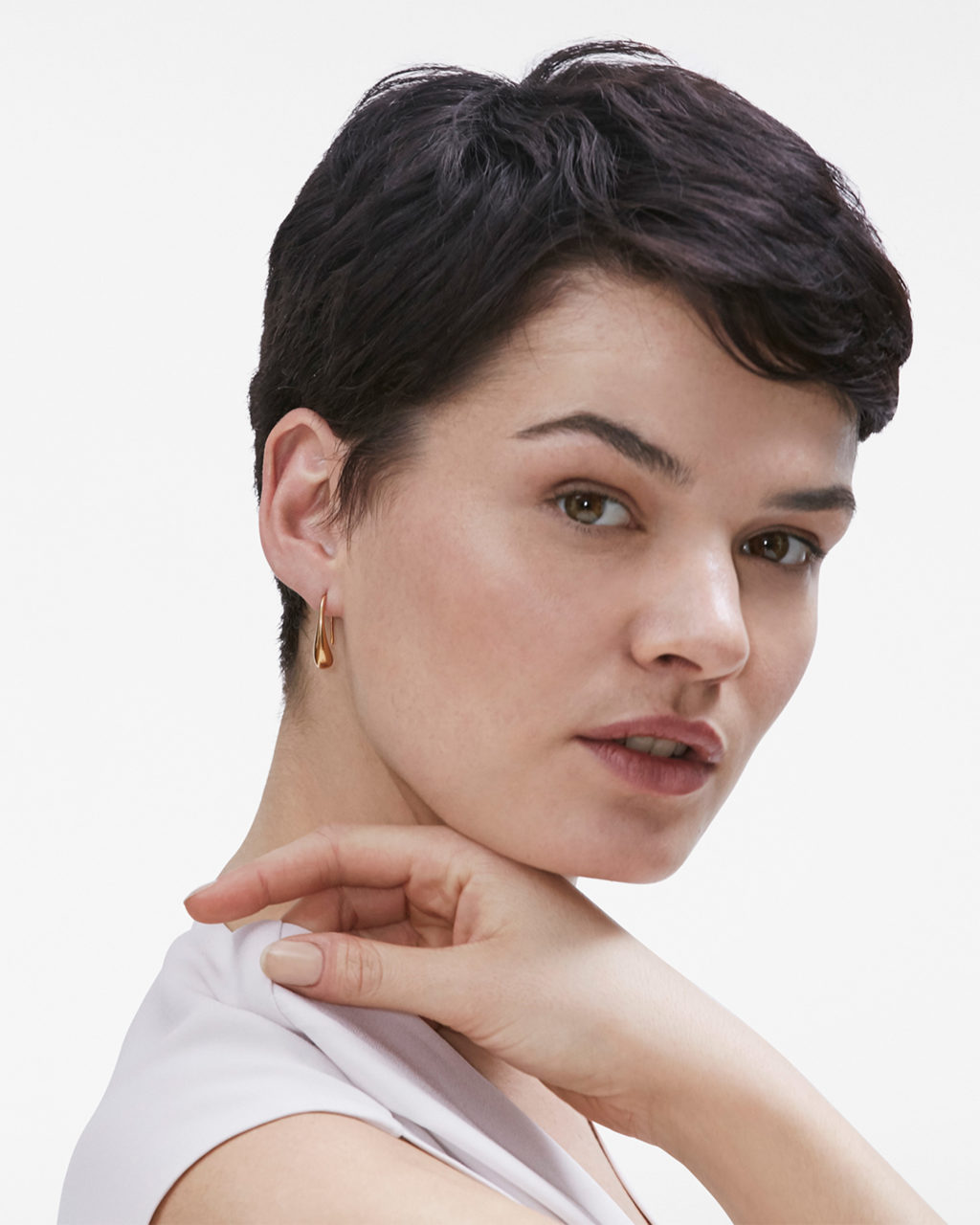Interview Outfits for Lawyers: 13 Tips for Nailing It
September 08, 2016
On my quest to rejoin the workforce, I learned finding interview outfits for lawyers was a great source of stress. I constantly polled my lawyer friends via text chains about whether it was okay to wear these earrings or those heels or that suit. After all, lawyers are a conservative, nitpicky bunch, trained to be detail-oriented and rule-focused; I maintain that my anxiety was well-founded.
Most big corporate firms are business formal—all suits, all the time. However, once you’ve been hired, some firms allow “business casual” attire (an ill-defined, unhelpful description when it comes to actually getting dressed, in my opinion). A lucky few might get to wear “whatever they want” on days when they don’t have external meetings. But it’s a different story entirely when it comes to interviewing for these positions.
Please note: This advice is not meant to endorse what interviewers—which, in many cases, will be older and male—might prefer women to wear. Rather, it is a straightforward series of recommendations, based on conversations with a wide range of attorneys, for dressing in a way that will help you get the job you want (presumably, since you’re interviewing for it). Below, a compilation of experiences in legal interview dress codes.
1. In almost all cases, wear a suit.
I’m sorry—I know suits can be terrible! (Not all, of course.) But even when I knew the attorneys interviewing me at a nonprofit would be in jeans, I showed up in a suit. You want to be a lawyer, so make sure your interview outfit makes you look like the best version of one. Just about every attorney I spoke with agrees on this point (except for one caveat, below). Emily, a senior associate at a Manhattan law firm, explains: “People want their lawyers to be nerdy know-it-alls wearing suits.” Prove that you can dress the part when you need to.
However, there are some exceptions if you’re not interviewing at an actual law firm. A friend of mine recently got a job as legal counsel for a major broadcast network in New York after wearing nice dresses, non-matching blazers, and tan heels to her interviews there. And my friend Chris, who works at a tech startup in San Francisco (and previously at a law firm), said that you would definitively not get a job at his company if you arrived in a suit, as it would show that you didn’t understand the company culture at all. So, if you’re applying for a legal job at a company whose main focus isn’t law, the suit standard may be somewhat relaxed.
2. Stick with standard gray, black, or navy.
Very thin pinstripes are okay, but nothing big and garish. The point is not to be flashy or noticeable, but to look professional and respectable. Arial, another federal government attorney with law firm experience, recommends that you “avoid embellishments like ruffles, ‘statement’ buttons, and ‘interesting’ hems or slits.” According to my friend Rob, a senior associate at a California law firm, “You shouldn’t wear linen unless you’re in Louisiana in the summer…and even then, you probably shouldn’t.”
3. Skirt suit, dress suit, or pantsuit? It’s up to you.
Of the suits I own, my two favorites are both dress suits with matching jackets, but to be very clear: They are actually made to be worn together, with the dress and jacket both of the exact same suit-style material and color. They are not just dresses with similar-colored blazers.
The good news is, you have some freedom in choosing between skirt suits, dress suits, and pantsuits. Emily thinks pantsuits are best, because you don’t have to worry about hose (another hot topic, discussed below). She also believes pantsuits are also less likely to be too tight (note: that’s because she’s never seen me in a pantsuit). Meanwhile, Amanda—a lawyer for the federal government—says that dress suits “read as mature and polished,” which can be helpful if you are young or young-looking. Kate, an in-house lawyer in the notoriously conservative mutual fund industry, ranks them thusly: “Skirt suit > dress suit > pantsuit, because some older people still think that women shouldn’t wear pants.” (Good grief.)

The Hoffman blazer, Peggy top, and Clooney pant.
4. If wearing a skirt or a dress, watch out for skirt length, and consider hose.
Any skirt you wear should be to the knee. Before your interview, check what happens when you sit down in your skirt or dress, and when you cross your legs. Is your skirt riding up? Don’t wear it!
You probably don’t need to wear hose. I would personally argue that no one (besides Kate Middleton, of course) wears nude pantyhose anymore, particularly in the summer, but do shave your legs. In winter, it’s okay to wear sheer or semi-sheer black tights (I like the Commando Sheer Control Top Tights). Nina, an in-house attorney in the financial sector, agrees with me, but Amanda and Kate both caution that hose might be advisable at some white-shoe firms, as some older lawyers may find bare legs inappropriate. Arial thinks that hose won’t hurt, but aren’t necessary in the summer. Under no circumstances should you go with patterned tights or fishnets.
5. With pantsuits, the style depends on whom you’re interviewing with.
For a conservative employer, Kate suggests steering clear of trendy styles like skinny pants, but Amanda says she wore “cigarette-type pants that were a tiny bit cropped” to her government job interview, which obviously went well. However, she does suggest that you shy away from jogger pants, no matter how nice the material: “They will make your interviewer feel very, very old.” When in doubt, go with a classic, straight-leg fit (the Mejia pant are a safe bet) for your interview outfit.
Either a shell or button-up shirt under your suit is fine, but keep the colors simple. Emily argues for shells, just because they’re more flattering (try the Peggy top in ivory– but try it on with your jacket first). Kate notes that if you’re going for a more conservative look, collared shirts or shells should be white, cream, or pale, pale blue (think the Lagarde shirt in cream or the Rowling top in birch). Don’t wear anything that could be considered low-cut.
6. If it’s winter, make sure you have a nice overcoat.
Your overcoat should look sharp too – you never know who might see you in it. A timeless wool coat in tan, gray, or black, such as the Prospect Puffer, will do the trick.

The Prospect Puffer and Arbus sweater.
7. Dust off the black pumps.
The standard? Nice, plain black pumps that aren’t too high (this isn’t the time for stilettos). Don’t wear open-toed shoes, and get any scuffs polished away. Check to make sure that the shoes don’t slip off your heels or make unflattering noises when you move. You never know how far you’ll have to walk to meet different people, so you should be able to go a full city block (at the very least) without wobbling or wincing. (As Emily puts it, “You need to be able to keep up with a man.”) As for flats, Arial advises, “They’re acceptable as long as they are professional (leather or leather-looking), and signal ‘office,’ not ‘commute shoe.’” Nina adds: “No platforms.”
8. Keep your jewelry simple.
My law school advisors said that some old-guard attorneys think women should wear pearl necklaces as part of their interview outfit, so I did. However, I don’t think it’s necessary anymore. In general, stick with (no surprise) plain, understated pieces that don’t look cheap or costume-y (for example, the Odile earrings). Even if you normally pile on the rings or bracelets, leave them at home. And no statement necklaces—you can make all the statements you want after you have the job. “Make your jewelry the nicest quality that’s within your budget,” says Amanda. “Also, really dangly earrings are a no-go.”

The Phoebe earrings.
9. Polished totes or professional briefcases only.
Don’t bring a normal everyday handbag to an interview. Instead, carry a leather (or leather-looking) tote bag or women’s briefcase. “It must fit your portfolio and printed copies of your résumé inside,” says Kate. Arial thinks designer or generic are equally fine, but logo prints (and brazen logos in general) are gauche. That being said, Nina thinks she once got a call back because a partner liked her red leather bag, so there may be some room to show style here.
10. Take care with your hair.
To start with the obvious, hair should be neatly brushed and completely dry. I always fail to give myself enough time to dry my very thick hair, so now I try to shower the night before, or a few hours before I need to start getting ready. Putting your hair up is okay, and might be preferable if it’s really hot or humid—but ponytails and buns must be neat. Emily suggests covering up hair elastics (you can try the handy “hair wraparound” trick). Adds Arial, “If you can’t resist playing with your hair if it’s down, wear it up.”
11. No bright nail colors.
My law school advisors said women should always have their nails “done”—meaning neat, trimmed, and bare or painted with clear or pale pink polish only. Some lawyers I spoke with expressed tolerance for red nail polish (definitely not purple, blue, or anything edgier), but the fear here is chipping—with brighter colors, any flaws are much more noticeable. Also, keep nails short. “No talons,” says Nina. “It just means you can’t type.”
12. Makeup, like jewelry, should be simple.
Think clean and fresh, and don’t try anything for the first time on the day of your interview (heaven forbid you be allergic, or simply find out that it looks weird under different lighting). Arial says, “Focus on evening your complexion and hiding any blemishes. Shadow should be neutral, and lipstick should be conservative and neatly applied. Avoid anything sparkly/shiny/glitter-based.”
13. A few last, miscellaneous interview outfit tips…
- Make sure your clothes are tailored and fit perfectly—pants hemmed to the correct length for your shoes, skirts that don’t pull across your thighs, etc. Rob says, “Comfort is key. You don’t want to be squirming and sweating.” Indeed.
- “Take out [unusual] piercings—even the more casual interviewers will note it and comment on it,” says Nina. Also: “Cover tattoos.”
- Consider bringing the following in your bag (in addition to your résumé copies, of course): a Tide pen, a compact, Band-Aids in case your shoes turn on you, wardrobe tape in case your hem falls out or your button-up shirt gaps at the chest, a nail file, blotting papers, and lipstick if you wear it. Check your appearance one last time before the interview starts to make sure you don’t have anything in your teeth and your hair still looks roughly like you want it to.
- Take the hair tie off your wrist!
Like any part of the interviewing process, it’s up to you to decide how far you want to extend yourself to get in the door. And of course, if you aren’t sure about something, don’t wear it. As Emily says, “It’s best that you’re not remembered for what you wore.” Good luck out there!





